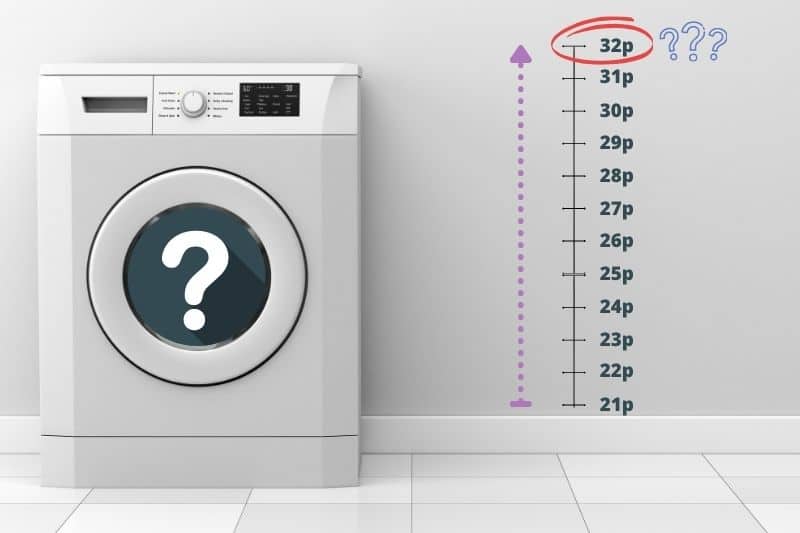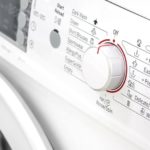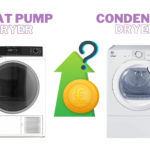Most of us use the washing machine several times a week, but how much does it cost, and how can you save money when washing clothes?
We looked at 20 of the most popular washing machines in the UK to calculate the average amount of electricity and water used per cycle. You can find the data in the table below.
We then worked out the average running costs based on current electricity and water prices for October to December 2025.
Read on to find out how much your washing machine costs to run!
Electricity Costs
Let’s look at electricity usage first, since this is what makes up the bulk of the cost of doing laundry.
The average washing machine cycle uses 0.46 kWh of electricity per cycle.
The average electricy cost in the UK is 26.35 pence per kWh for the Energy Price Cap (EPC) period from 1 October to 31 December 2025.
This means that the average washing machine costs 26.35 x 0.46 = 12.1 pence per cycle.
If you use your washing machine 220 times a year, it would cost you £26.67 in electricity costs.
Water Costs
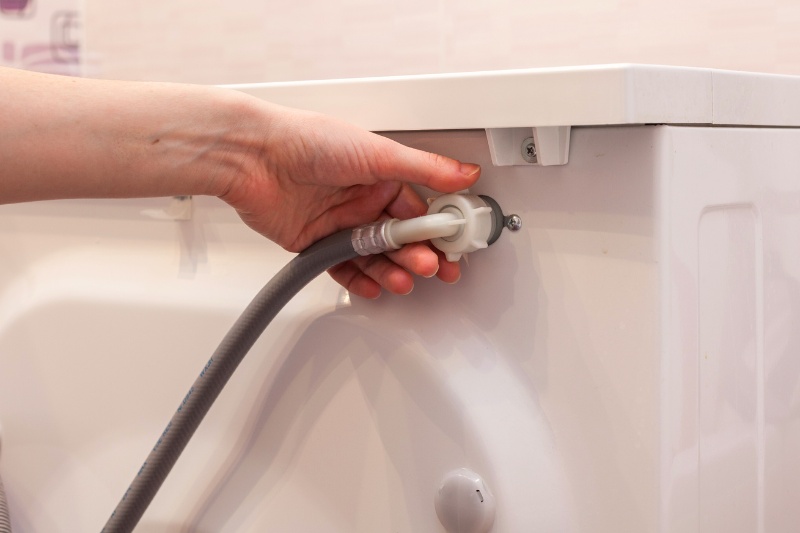
Next, let’s look at water costs.
Based on our analysis of 20 of the most popular washing machines, the average model uses 47.65 litres of water per cycle.
The average cost of water per litre in the UK is about 0.3 pence per litre.
This means that the average washing machine uses 0.3 x 47.65 = 14.3 pence water per cycle.
If you use your washing machine 220 times a year, it would cost you £31.45 in water costs.
Total Cost to Run a Washing Machine Per Cycle and Per Year
Adding together electricity and water costs, the average washing machine costs 26.4 pence per cycle to run.
If you use it 220 times a year, it would cost you £58.08 annually.
Costs are split roughly evenly between electricity and water.
Data on Washing Machine Energy and Water Usage
| Model | Capacity (kg) | Energy rating | Energy usage per cycle (kWh) | Water usage per cycle (litres) |
|---|---|---|---|---|
| AEG 6000 UniversalDose LFR61144UD | 10 | A | 0.512 | 52 |
| Beko EnergySpin BM3WT3841W | 8 | A | 0.468 | 47 |
| Beko WTIK74122 Integrated | 7 | A | 0.44 | 45 |
| Bosch Series 2 WGE03408GB | 8 | A | 0.46 | 47 |
| Bosch Series 4 WAN28259GB | 9 | A | 0.489 | 50 |
| Bosch Series 6 WGG24400GB | 9 | A | 0.49 | 50 |
| Candy CBW28D4WM5J-80 Integrated | 8 | A | 0.47 | 44 |
| Candy Quick Pro GD 298-80 | 9 | A | 0.4 | 42 |
| Haier BHA6S69M6DB9J-80 Integrated | 9 | A | 0.35 | 46 |
| Haier X Series 5 HW100-BP14357UUK | 10 | A | 0.41 | 44 |
| Hisense 3 Series WF3M741BWI Integrated | 7 | A | 0.44 | 45 |
| Hisense 5i KitchenFit Series WF5I9043BTFS | 9 | A | 0.44 | 40 |
| Hoover H-WASH 350 H3WPS496TAMB6-80 | 9 | A | 0.445 | 46 |
| Hotpoint Anti-stain NSWR 946 GK UK | 9 | A | 0.49 | 50 |
| Hotpoint NSWA 946 WW UK | 9 | A | 0.49 | 50 |
| Indesit MTWC 71485 W UK | 7 | B | 0.52 | 45 |
| LG TurboWash 360 with AI F4C510WBTN1 | 10 | A | 0.462 | 52 |
| LG Y500 Series AI Direct Drive F4Y513WWLN1 | 13 | A | 0.45 | 58 |
| Logik L914WM23 | 9 | A | 0.49 | 50 |
| Samsung Series 5 AI Energy WW90CGC04DABEU | 9 | A | 0.44 | 50 |
The Effect of Washing Temperature
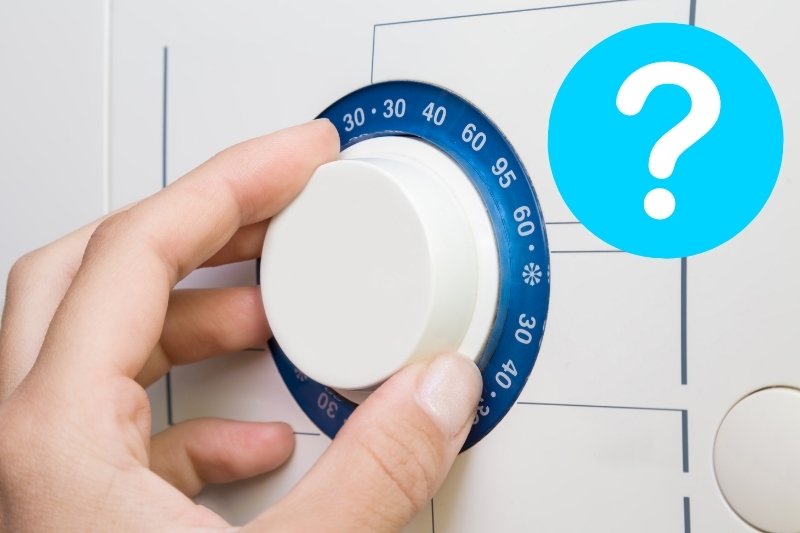
As you would expect, washing at lower temperatures uses less energy.
There isn’t a lot of good data available about exactly how much energy washing machines use at different temperatures.
An often-quoted statistic from the Energy Saving Trust is that “Washing clothes at 30 degrees rather than higher temperatures will save around 40% of the energy used each year.”
However, the Energy Saving Trust don’t say exactly what they mean by “higher temperatures”. People tend to assume this means 40 degrees Celsius, which is the most common temperature to wash clothes at.
Some more detailed data comes from a 2006 study by Öko-Institut, a German research institute.
According to this data, the average energy usage for washing a 5 kg load of clothes as follows:
- 90°C/95°C: 1.9 kWh
- 60°C: 1.15 kWh
- 40°C: 0.65 kWh
- 30°C: 0.40 kWh
- 20°C: 0.25 kWh
This data is from 2006, so it’s quite out of date since modern machines are much more energy efficient. Also, it looks at a 5 kg load of clothes, which is less than most washing machines can handle.
However, it does offer a useful comparison of energy costs at different temperatures.
If we assume that the Öko-Institut data is still correct, then the following is true:
- Washing at 60°C uses 77% more energy than washing at 40°C.
- Washing at 30°C uses 38% less energy than washing at 40°C
- Washing at 20°C uses 62% less energy than washing at 40°C.
The Effect of Eco and Quick Wash Cycles
Many users may be surprised by the eco wash cycle on most washing machines as they can take considerably longer than other cycles.
Eco modes use a lower water temperature as most of a washing machine’s energy usage comes from heating the water, it just means that the cycle needs to be longer to get the same level of cleaning.
Eco modes might take longer, but they can use between 35 and 59% less energy than a standard hot cycle, and it can offer considerable savings in water usage too according to Currys.
Quick wash cycles can use about half the electricity of a regular cycle since they are so short. However, they aren’t suitable for using all the time.
Is It More Efficient to Have a Big Machine and Do Fewer Loads a Week?
Yes, it’s cheaper to have a 10 kg machine and fewer loads per week rather than having a 7 kg machine and needing to do more loads per week.
The capacity of a washing machine doesn’t have much effect on its overall running costs, so owning a bigger machine will help you save money as you’ll be able to do fewer loads in total.
What’s the Most Energy-Efficient Washing Machine on the Market?
According to our research, the most energy-efficienty washer currently available is the Bosch Series 8 i-Dos WGB256A2GB, which uses just 0.3 kWh of energy on a standard cycle. This is much less than the average of 0.46 kWh per cycle.

Lover of coffee, painting, and all things cute and fluffy. I’m always on the lookout for easier, more gentle ways to tackle awful household chores.
